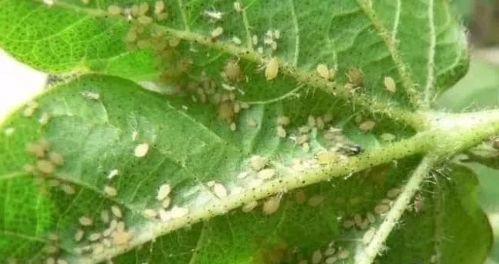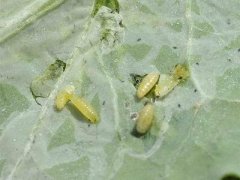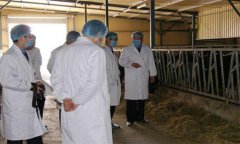Cotton aphid characteristics of flower aphids, symptom characteristics of flower aphids and cotton aphid morphology
Among the common insect pests of flowers, the harm of cotton aphid is very great. Let's take a look at the harmful habits and forms of cotton aphid.

For harmful habits: cotton aphids are common aphids in general herbaceous flowers, which occur on plant buds, young leaves, or buds and Corolla, and often gather in groups because of their rapid reproduction. When the nymph is the fourth instar, it takes only 5 days for the wingless fetus to complete the development of the first generation at 25 ℃, and it takes about two weeks to complete the first generation when the temperature is low in winter on the plains. Dry weather is suitable for aphid growth and reproduction, which is more common in spring and autumn. Because of shelter in greenhouse, the occurrence is often more serious than that in open field. Damage to roses, African chrysanthemums, lilies, carnations, carnations, hibiscus, etc., but also the main damage to cruciferous vegetables, beans, melons, insects, in addition to direct smoking, but also spread virus diseases.
Shape: the body of the wingless worm is 1.5 mm long. the color of the worm varies with the host and season, and may be dark green, green or yellowish. The ventral canal is black, the end of the tail is obtuse, the middle is small, hairy 5-7 branches. The body of the winged viviparous adult is black, and there are 3-7 parasensory organs in the 3rd segment of the antennae, while there are no accessory sensory organs in the 4th and 5th segments.
- Prev

The harmful symptoms of floral leafminer, what are the larvae of leafminer?
What is the harmful habit and form of leafminer? Do you know? If you want to know, let's take a look. For harmful habits: the adults lay eggs in the mesophyll, and the larvae first feed under the smooth epidermis of the leaves.
- Next

The latest news of bird flu in 2018: the number of bird flu cases has dropped by nearly 50%, and epidemic prevention work will be strengthened.
Now we have reached a period of high incidence of bird flu, so we need to strengthen our defense in this respect. What should we do specifically? Let's take a look. Ducks need to be screened before slaughtering, and epidemic prevention is effective in order to prevent the spread of bird flu. Last year, the Council of Agriculture forced all ducks in Taiwan.
Related
- A one-day flower show brings 130 million yuan in orders! Nanhai, this Phalaenopsis exhibition is amazing
- What do the flower language and meaning of Lutheran tree mean? Precautions for planting Lutheran tree
- Encounter Chaoshan Kongfu tea, not without this cup of Phoenix single clump
- The durian market in Vietnam and Thailand is flooded. The price of imported durian has plummeted by 30-40% in a month.
- Shanghai solved the problem of local vegetable supply by planting 80,000 mu of green leafy vegetables.
- Wageningen University has become the best agricultural university in the world for the seventh time in a row.
- The strongest export season of South African grapes is full of challenges, with exports to Russia falling sharply by 21%.
- Sri Lanka is on the verge of bankruptcy, "Tea for debt" Organic Agriculture Revolution aggravates the Food crisis?
- Turning waste into earthworm manure and worm manure into organic fertilizer-A new choice for auxiliary farming
- Organic rice growers shoulder the responsibility of nurturing agricultural talents! Yinchuan Sustainable Farm with Organic Life Camp

